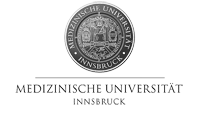|
|
 |
1 Department of Paediatrics, Second Faculty of Medicine, Charles University in Prague, Prague, Czech Republic 2 Department of Paediatrics, Third Faculty of Medicine, Charles University in Prague, Prague, Czech Republic 3 Department of Paediatrics, Faculty of Medicine, Masaryk University in Brno, Brno, Czech Republic 4 Department of Paediatrics, Faculty of Medicine, Palacky University in Olomouc, Olomouc, Czech Republic
Aims: Pendred syndrome (OMIM274600) is an autosomal recessive disorder characterised by sensorineural hearing loss and thyroid dyshormonogenesis. It is caused by mutations in PDS/SLC26A4 gene (OMIM 605646) encoding for pendrin, an anion transporter predominantly expressed in the thyroid and in the inner ear. Hypothyroidism in Pendred syndrome can be - although rarely - present from birth and therefore diagnosed by neonatal screening. The aim of the study was to identify patients with Pendred syndrome among a historical cohort of patients with congenital hypothyroidism (CH) identified by neonatal screening, and to find their mutations in the PDS/SLC26A4 gene.
Patients and methods: We investigated 197 Czech Caucasian children with CH detected by the neonatal screening between 1985 and 2005. The clinical diagnosis of Pendred syndrome was based on the laboratory and sonographic signs of thyroid dyshormonogenesis (low T4/fT4 and/or high TSH, normal or increased thyroid volume) in association with sensorineural hearing loss. In subjects clinically diagnosed as Pendred syndrome, we sequenced all 21 exons and exon-intron boundaries of the PDS/SLC26A4 gene.
Results: Hearing loss was present in 10/197 children with screening-detected CH. Of these, three fulfilled the diagnostic criteria of Pendred syndrome. Genetic analysis revealed that two patients were compound heterozygotes for PDS/SLC26A4 mutations: patient 1 carried c.2089+1G>A / c.3G>C, patient 2 carried p.Tyr530His / p.Val422Asp. Two of the four identified mutations were novel (c.3G>C in patient 1 and p.Val422Asp in patient 2). The third patient was free of mutations in the PDS/SLC26A4 gene, representing a phenocopy.
Conclusions: Among 197 children with screening-detected CH, we found two cases of Pendred syndrome caused by mutations in the PDS/SLC26A4 gene. This indicates the rarity of Pendred syndrome among the causes of CH.
Supported by grants of the Czech Ministry of Education (MSM 0021620814) and GAUK 2008/2007
